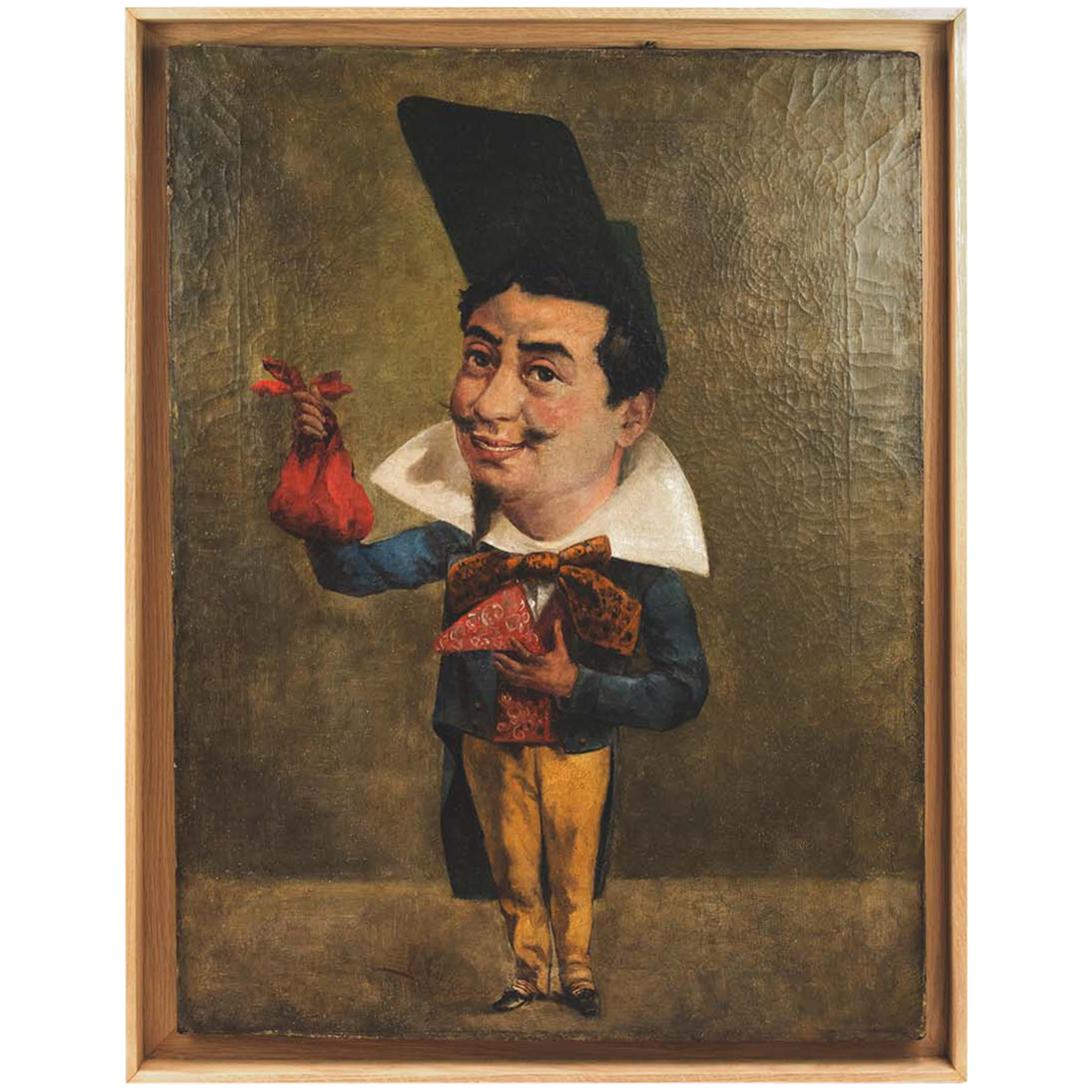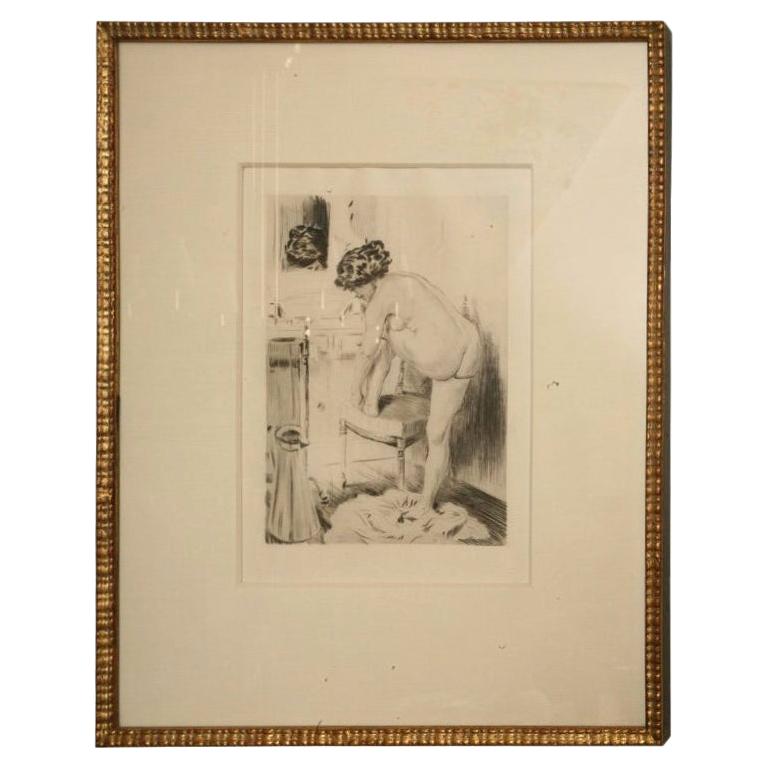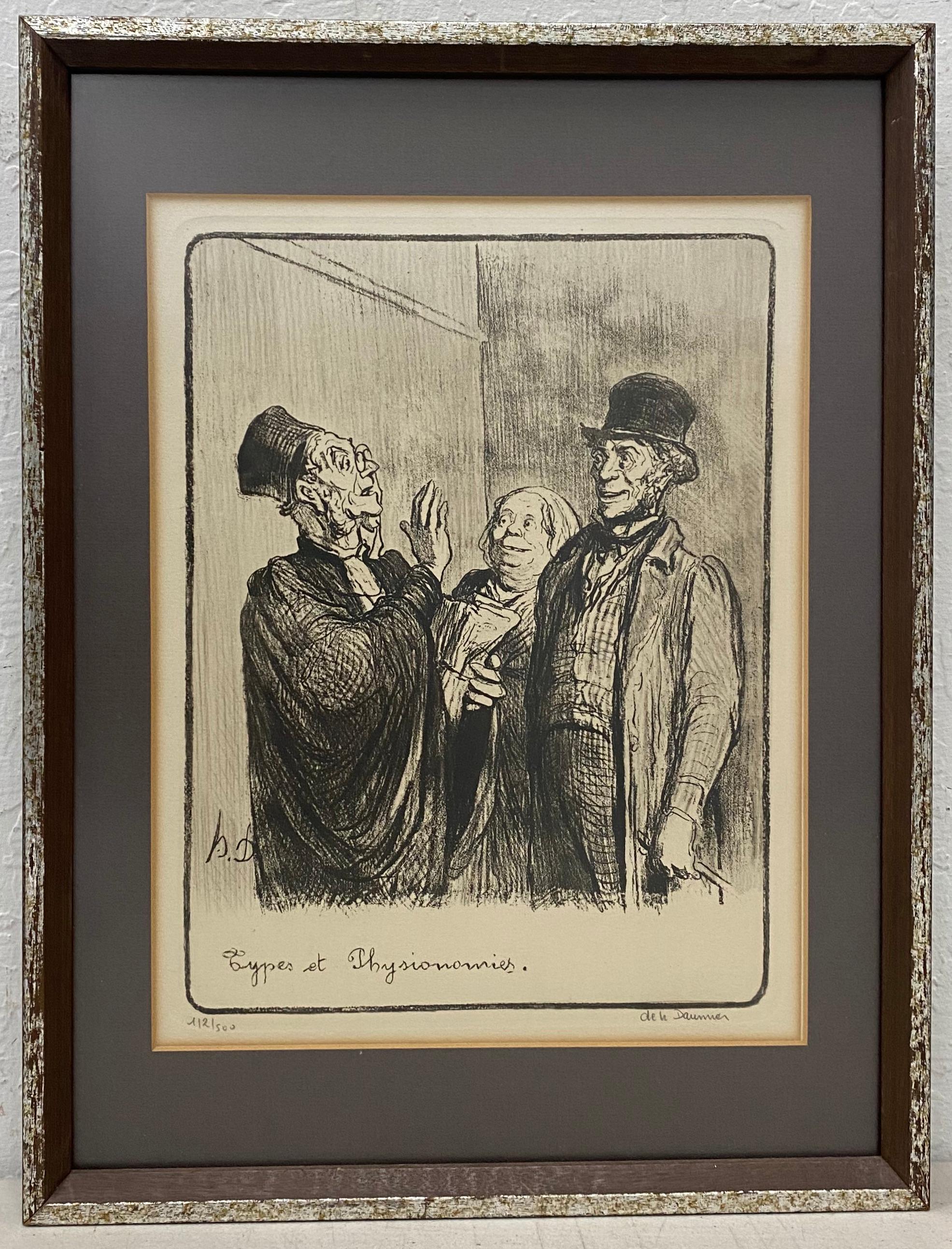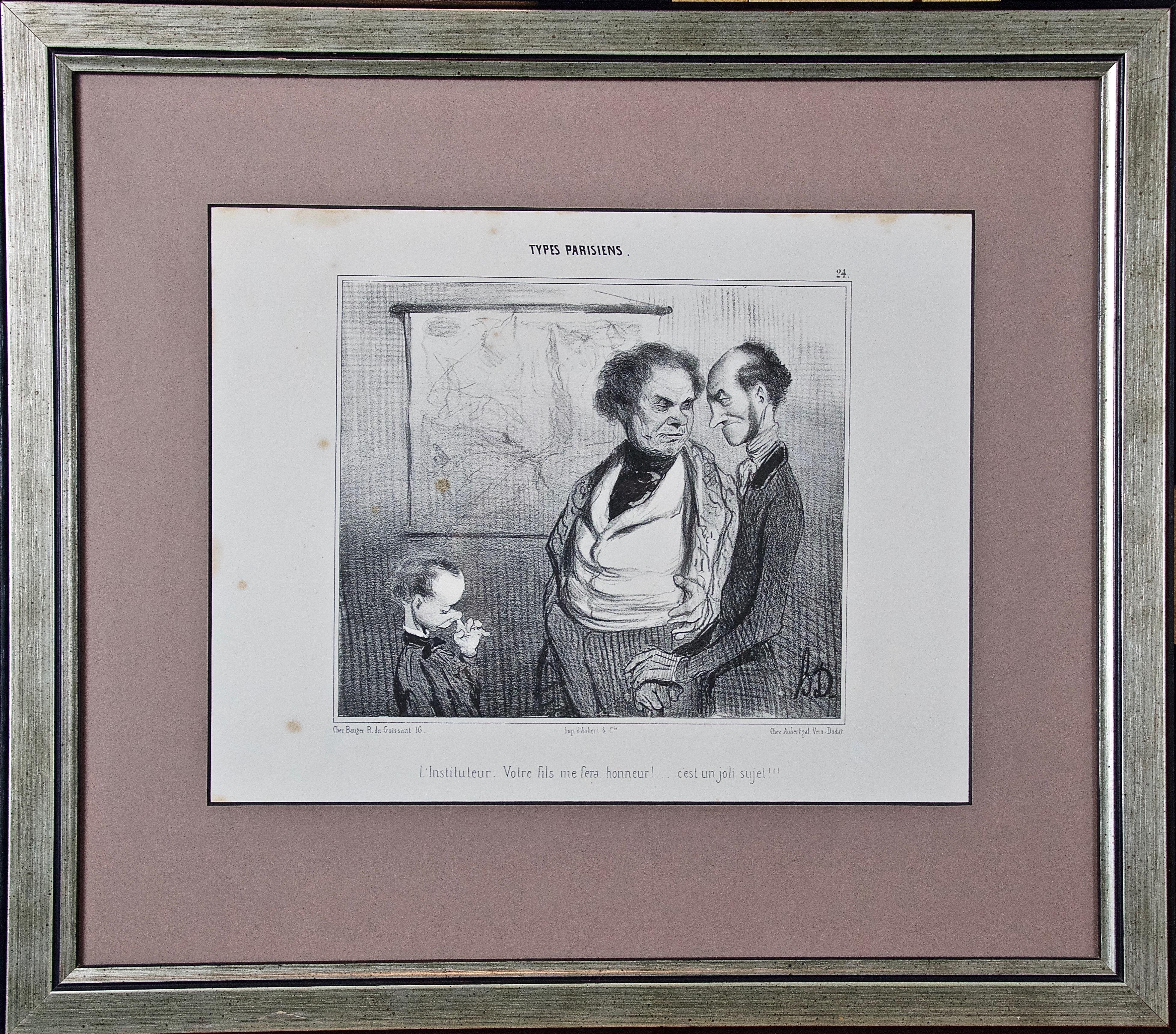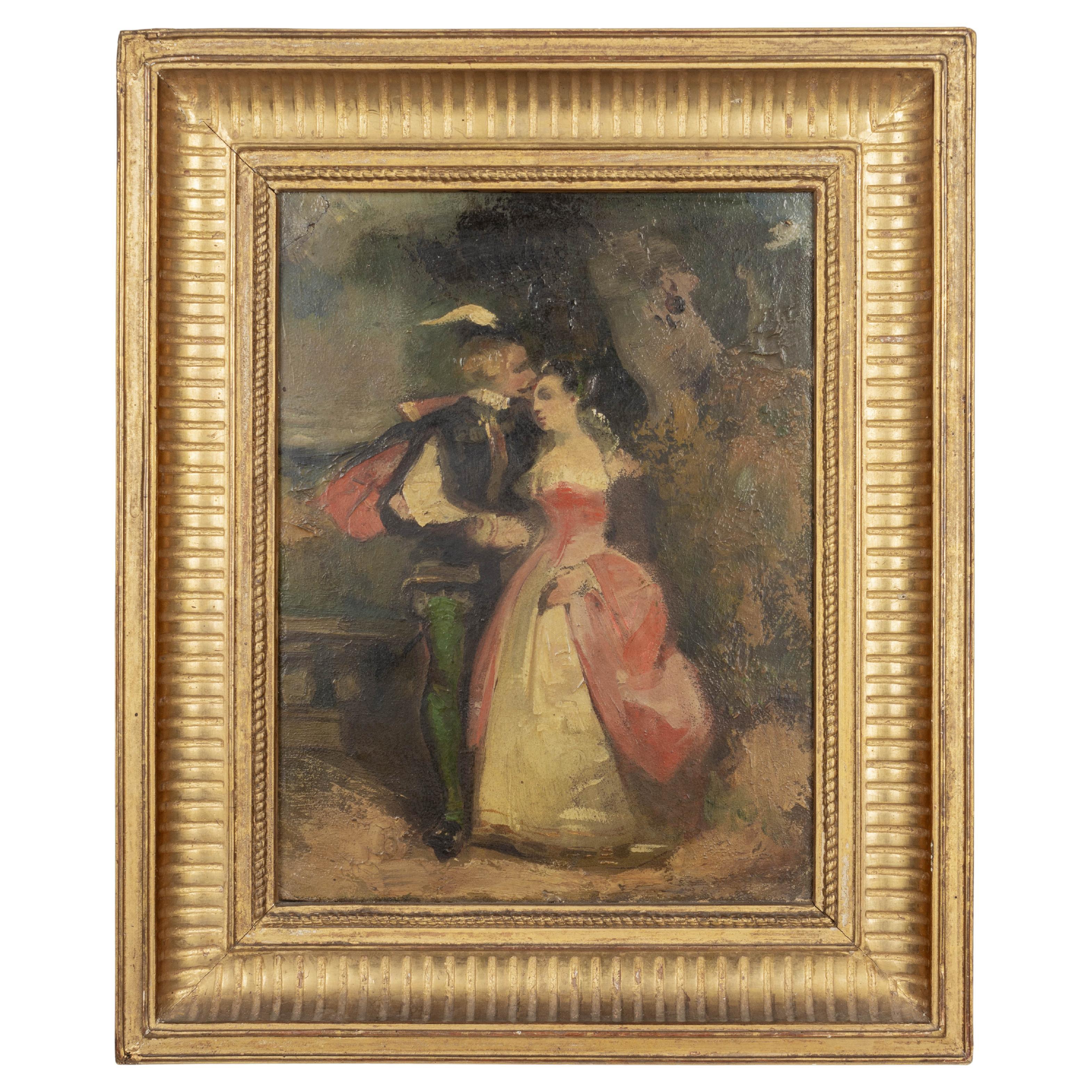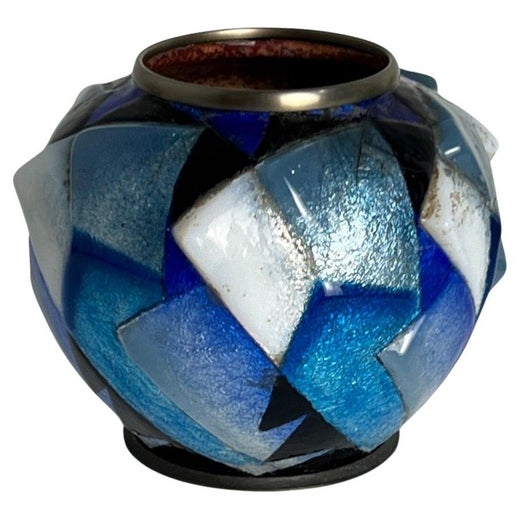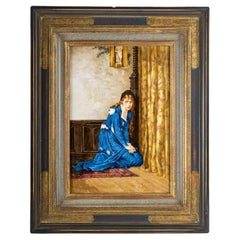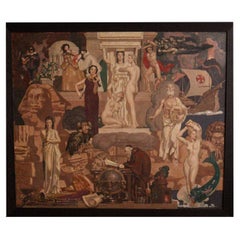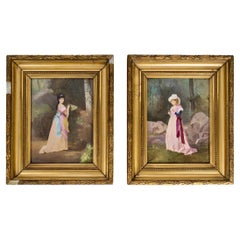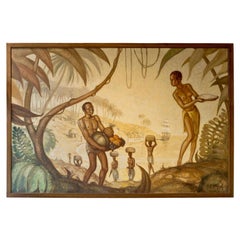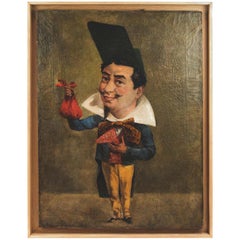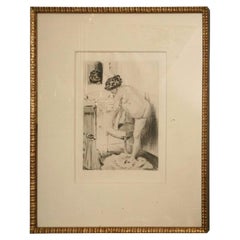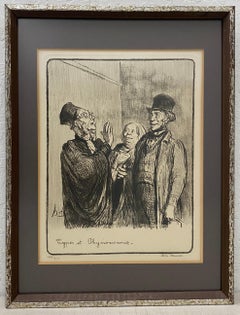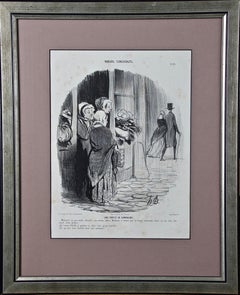C.Fauré Limoges « L'Amateur d'Estampe » After Honoré Daumier (1808-1879)
About the Item
- Creator:Camille Fauré (Maker)
- Dimensions:Height: 7.29 in (18.5 cm)Width: 8.67 in (22 cm)Depth: 0.95 in (2.4 cm)
- Style:Belle Époque (In the Style Of)
- Materials and Techniques:
- Place of Origin:
- Period:
- Date of Manufacture:circa 1935
- Condition:Wear consistent with age and use.
- Seller Location:Saint-Ouen, FR
- Reference Number:1stDibs: LU2612341510002
Camille Fauré
Camille Faurè produced designs for Limoges, long famed for its enamels.
Born in Perigueux, France, in 1874, Faurè spent a long apprenticeship before setting up his own workshop at Limoges, where he worked for over fifty years. Fauré became Limoges’ most famous and talented enamel artist. He exhibited in the 1925 International Exhibition of Modern Decorative and Industrial Arts, which gave Art Deco its name.
Faurè’s early work, like his post–World War II designs, involved large floral patterns, often in rich colors that kept in line with the Art Nouveau movement. He exhibited through his Paris shop, and produced vases, bowls, ashtrays, boxes and other items.
Faurè’s vases were made in many different shapes, including those of the gourd, kettledrum and egg, with geometric or stylized floral patterns. It was his geometric designs, however, which set him apart as the greatest creative enameller of the Art Deco style. These geometric designs included chevrons, lozenges, diagonal and stripe patterns and floral motifs, ranging from naturalistic to stylized patterns of leaves and flowers. The geometric patterns featured strong hues of blue, red, orange and yellow accented with blacks, whereas the floral patterns had more delicate hues such as turquoise, light blue, pink, lavender and white. Some vases had panels and borders of floral motifs combined with geometric stepped and angled motifs.
Using large vessels, vases, bowls or open-mouthed jardinières, the copper was covered in multiple layers of polychrome enamels in hard, vitreous, three-dimensional geometric designs of subtle complexity and color combinations. Faurè’s friend Marty occasionally worked with him in a very similar style. Both produced a small number of pendants in enameled gold, silver and copper.
Find a collection of Camille Faurè furniture and decorative objects on 1stDibs.
(Biography provided by Ophir Gallery)
- ShippingRetrieving quote...Shipping from: Saint-Ouen, France
- Return Policy
More From This Seller
View AllAntique 1890s French Napoleon III Paintings
Porcelain, Wood
Vintage 1940s French Art Deco Paintings
Canvas
Antique 1890s French Napoleon III Paintings
Porcelain, Wood
Vintage 1930s French Art Deco Paintings
Canvas, Wood
Antique Early 1900s French Belle Époque Paintings
Porcelain, Wood
Antique 1860s French Louis XVI Table Clocks and Desk Clocks
Marble, Bronze, Ormolu
You May Also Like
Antique Late 19th Century Paintings
Canvas
Antique Early 1900s French Art Nouveau Drawings
Silver Leaf
Mid-20th Century Impressionist Figurative Prints
Lithograph
Mid-19th Century Other Art Style Landscape Prints
Lithograph
Mid-19th Century Other Art Style Interior Prints
Lithograph
Antique 19th Century French Paintings
Giltwood, Paint
